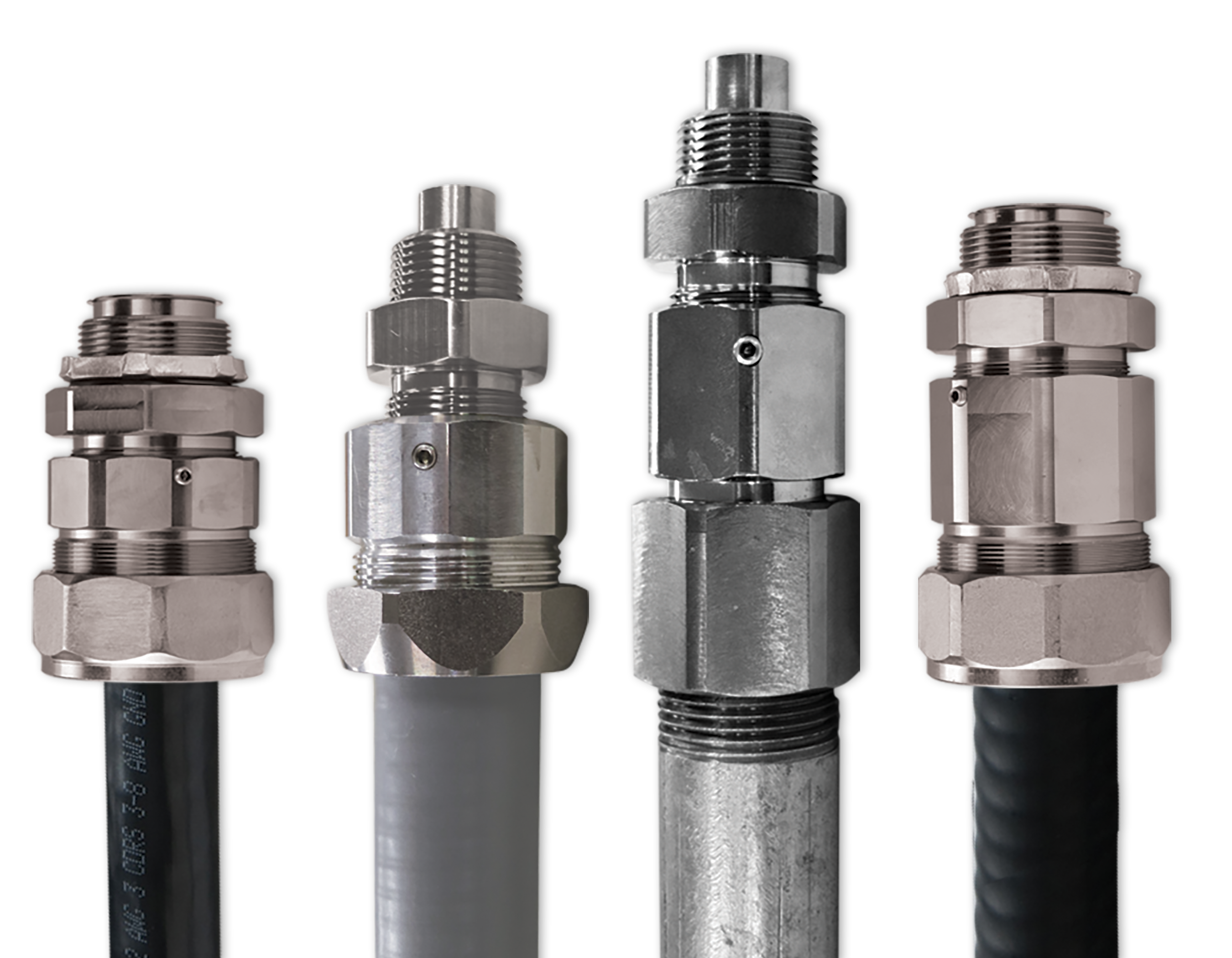Having a properly designed cable is an essential part of any variable frequency drive (VFD) system. Industry experts recommend that VFD thermoset cables have:
Each of these features are important and contribute to the overall safety and efficiency of a VFD system. However, without proper shield termination the benefits of VFD cable are lost.
The improper termination of VFD cable allows for uncontrolled stray currents to flow through the system. These stray currents can move through and damage the drive, motor, motor bearings, and even the cable itself, allowing electromagnetic interference (EMI) to escape and cause damage to nearby equipment.
PROPER TERMINATION PROTECTS FROM

Skin Effect

Cable Failure

EMI

Common Mode Current

Motor Bearing Damage
The source of this kind of damage can be difficult to diagnose and can cost millions in downtime. Implementing proper cable termination in a VFD system is an easy way to prevent these costs.
WHAT'S THE BEST WAY TO TERMINATE MY VFD CABLE?
In order to control stray currents and limit EMI, experts agree that VFD cable must be terminated at both ends—at the VFD cabinet and at the motor. When bonded properly at both ends, the shield creates a path of least resistance in the system and is able to return stray currents to the drive. This enables the shield to effectively minimize EMI.
For the most reliable termination, a VFD system should include three things: copper-tape shielded cable, self-terminating connectors (one for each end), and termination kits (one for each end).
COPPER TAPE SHIELD
Research shows that flat 5-mil copper tape, helically applied with 50% overlap, gives the best coverage and performance. This type of shield provides 100% coverage even when the cable is bent. Additionally, the tape’s large surface area and the low impedance of copper provide an ideal return path for stray current.
SELF-TERMINATING CONNECTORS
VFD self-terminating connectors are a specialized type of cable gland that makes 360-degree contact with the cable shield when tightened. This connection creates a low impedance path for stray currents to follow, keeping them contained in the VFD cable, and away from surrounding equipment. The connectors should be used on both ends of a cable to prevent stray current from damaging the VFD or motor.

From left to right: direct wire (tray), liquid tight (tray), NPT conduit (tray), direct wire (MC)
There are a number of different connector designs for different applications. Service Wire, for example, manufactures self-terminating connectors for direct wire and NPT conduit tray cable as well as a connector for armored cable installation.
TERMINATION KITS
While connectors are effective at directing stray current away from sensitive equipment, it is recommended that a VFD termination kit is also used to reinforce the lower impedance return path. This is essential to extend the life of the motor and prevent motor bearing failure.
Service Wire’s termination kit consists of two flat-woven tinned copper braids, stainless steel spring clamp, and adhesive-backed copper tape. The braids are installed on opposite sides of the cable against the cable’s copper shield. Adhesive copper tape is wrapped around the braids to hold them in place against the shield, and the clamp is placed over the tape to further secure them.
This configuration is wrapped with more copper tape for additional support. The other ends of the braid are joined together and then terminated to earth-grounded bare metal—of an enclosure wall or motor junction box—with a brass bolt or flat plate with bolt (not included in the termination kit).